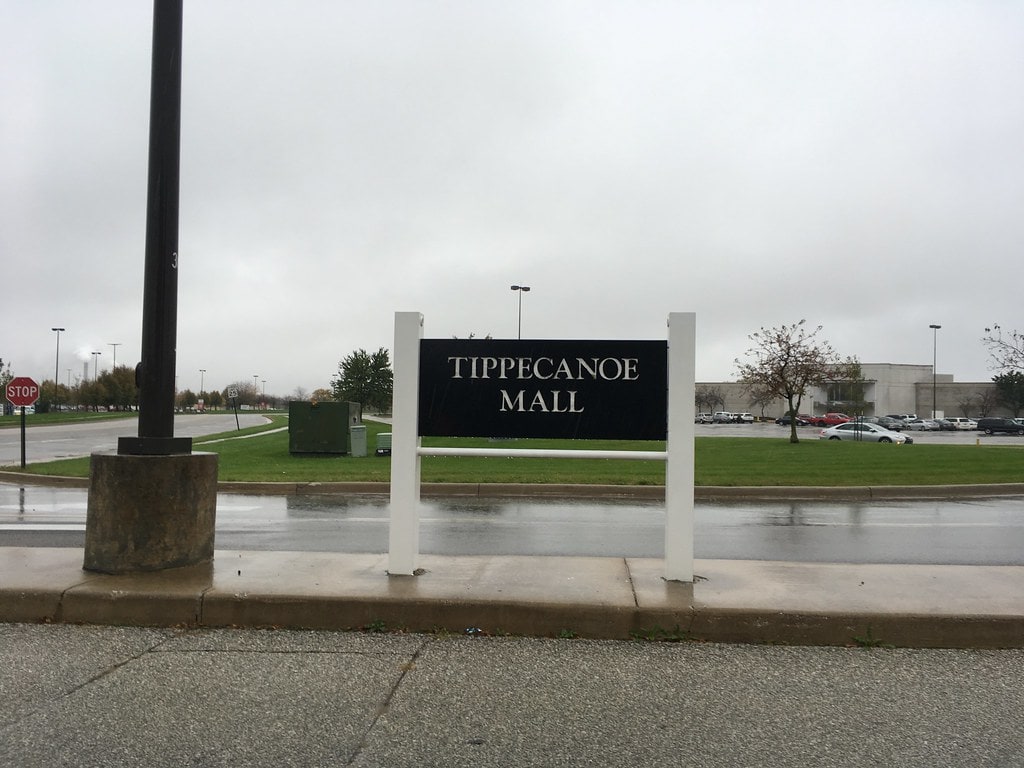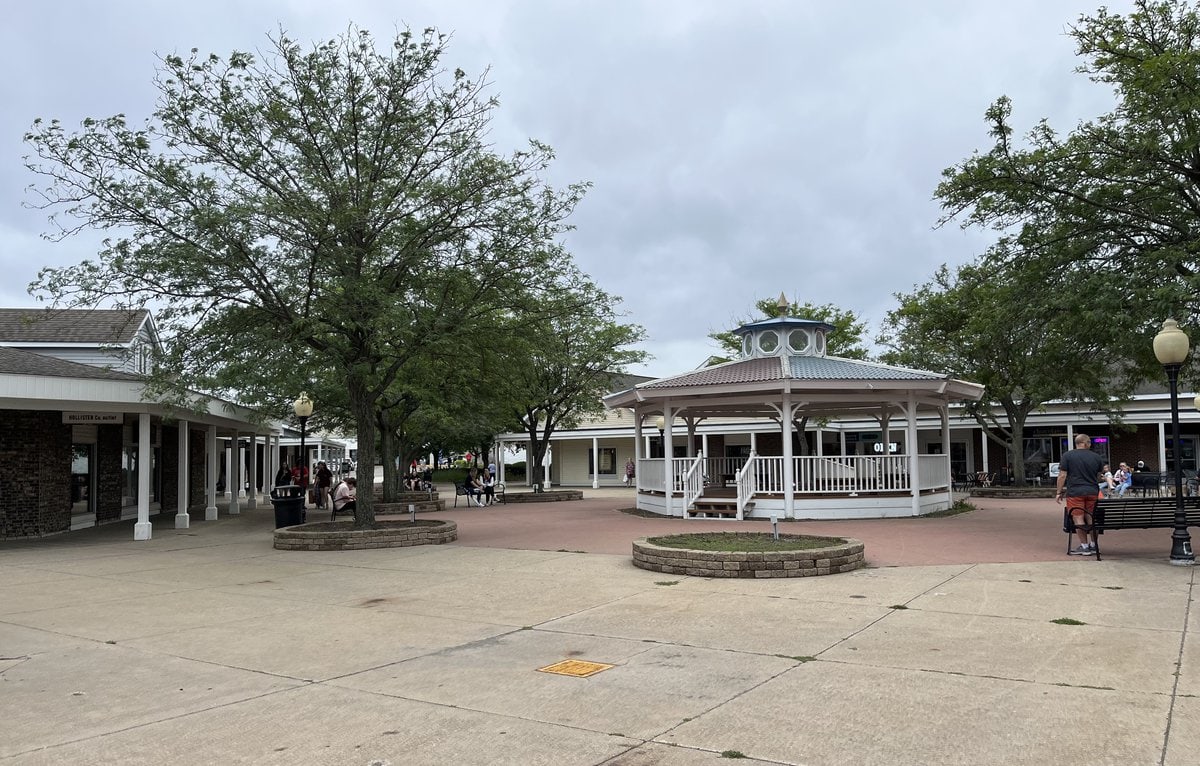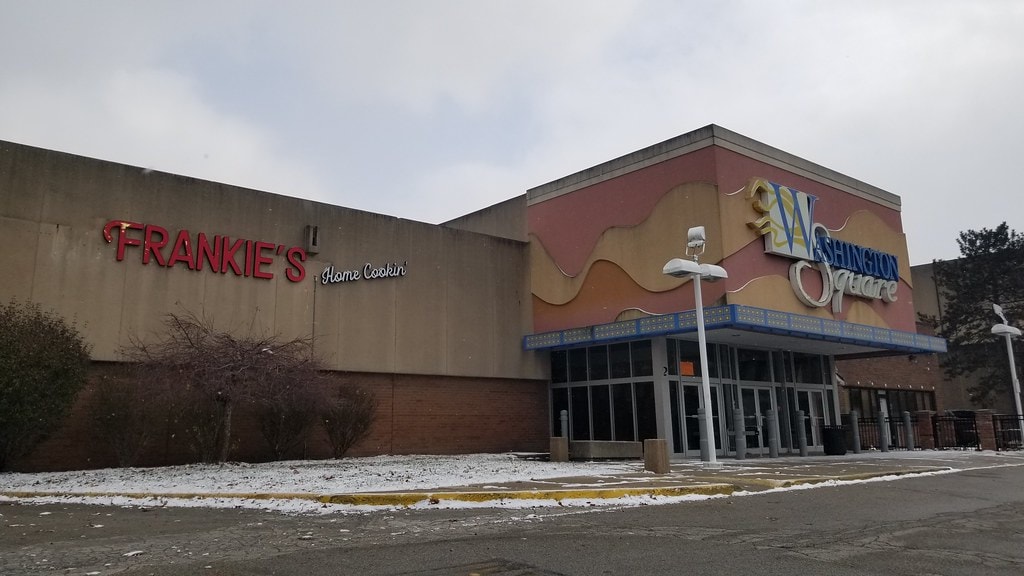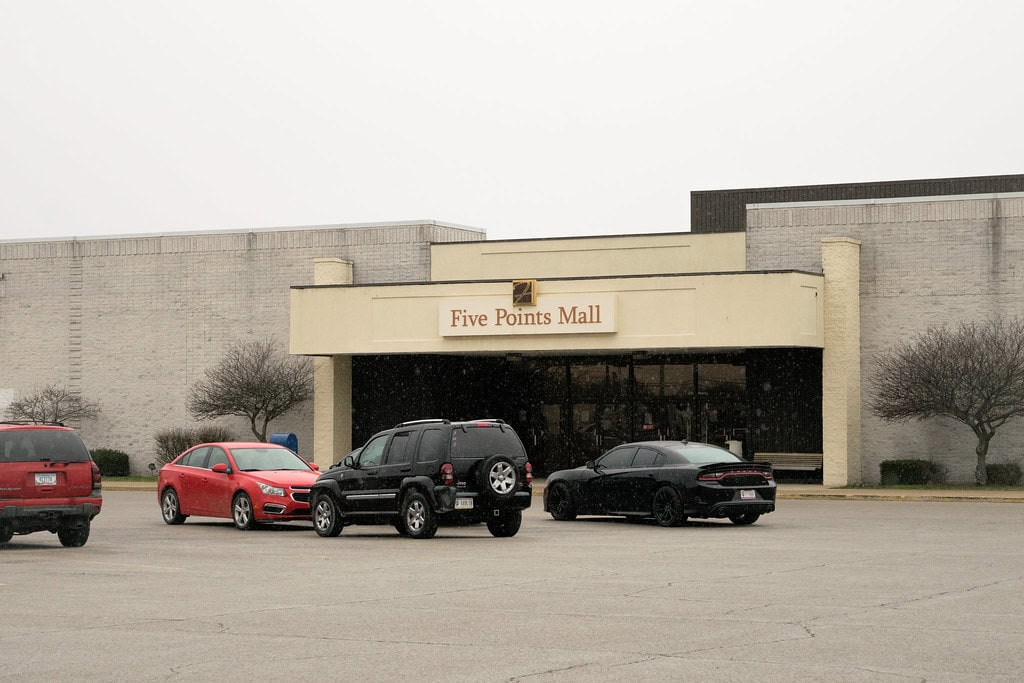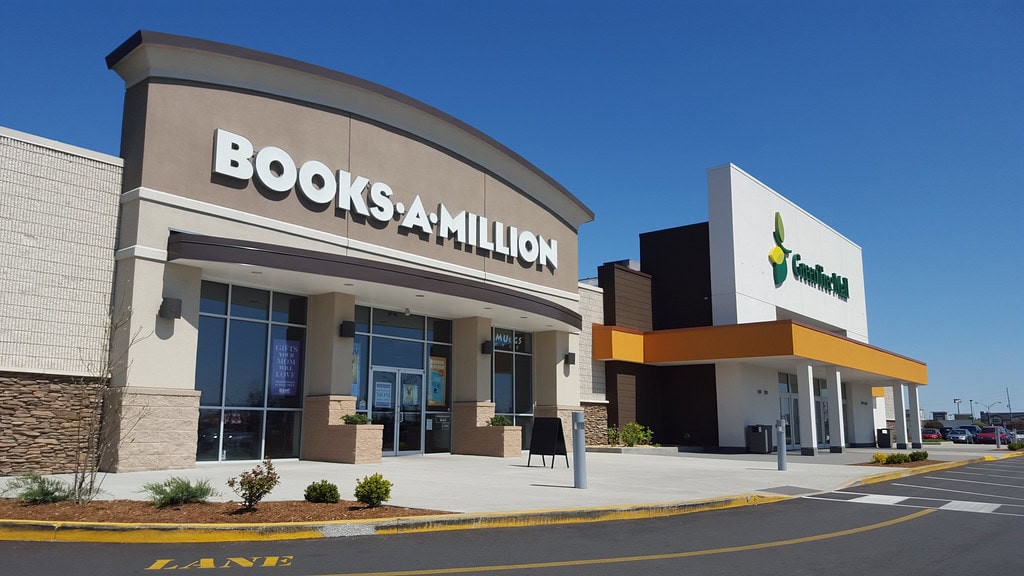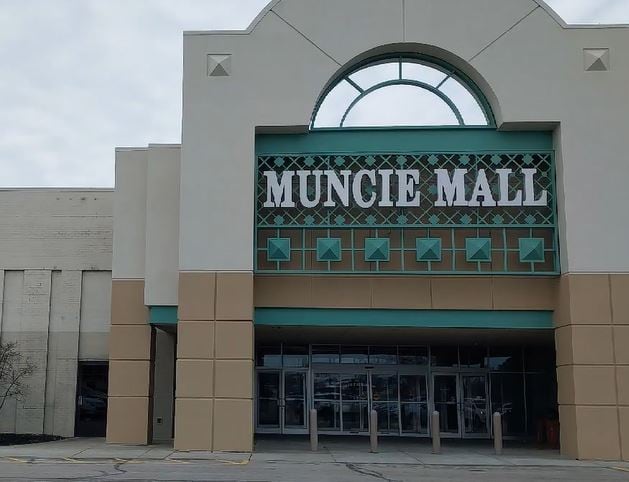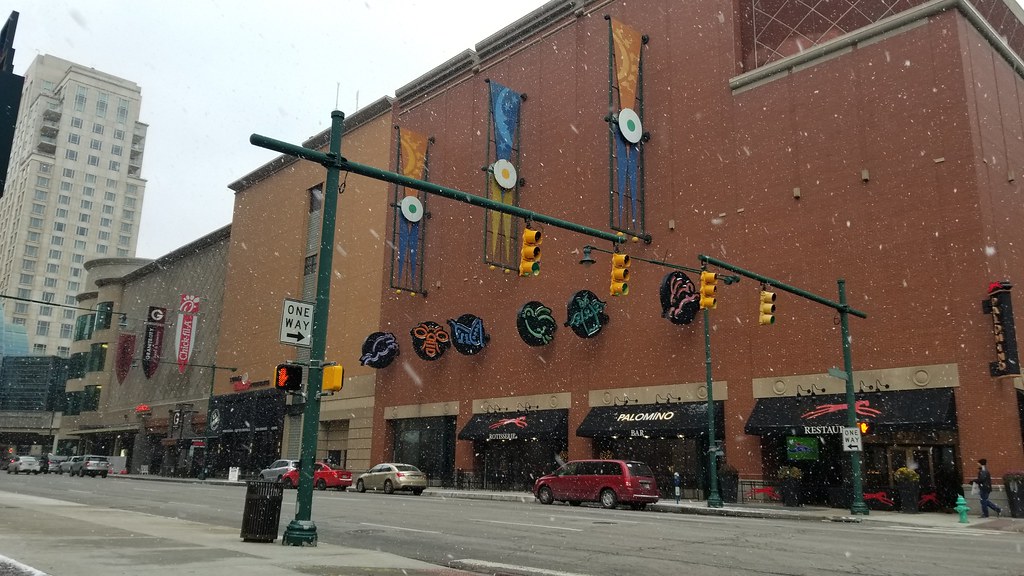Back When Lafayette Square Mall Had a Pulse
Long before redevelopment plans and design mockups, Lafayette Square Mall had foot traffic, blinking arcade machines, and anchor stores that actually opened their doors.
You could catch a movie at the General Cinema, grab groceries from Kroger, or drift past display windows under one enclosed roof. For Indianapolis, it was a first - an actual, full-scale enclosed mall.
Over time, it pulled shoppers from across Marion County, especially with the draw of JCPenney, Sears, and William H. Block. Today, it sits quietly behind fencing, a property with big plans and a longer backstory.
For people searching for things to do in Indianapolis, the current site is more of a waiting game than a destination.
Birth and Decline of a Mall
Lafayette Square Mall opened in April 1968 at 38th Street and Lafayette Road, backed by developer Edward J. DeBartolo Sr.
JCPenney and Sears took up major spots on opposite ends, while William H. Block held the central position.
Kroger added grocery traffic, and G.C. Murphy filled a general merchandise gap near Sears.
The General Cinema theatre handled entertainment. It wasn't just another retail cluster. It was structured, ambitious, and expansive from day one.
By 1974, Lazarus arrived during an expansion near the Sears wing.
The mall footprint stretched again in 1975 when the Kroger store was demolished and replaced with L. S. Ayres, adding another major retail chain to the lineup.
At its peak, the mall carried over one million square feet of retail space, and it worked through the 1970s and into the 1980s, stores filled out, and shoppers stayed.
The shift came during the 1990s. When Circle Centre Mall opened in 1995 downtown, it redirected foot traffic. National retailers took notice.
Simon Property Group, which had merged with DeBartolo's company, remodeled Lafayette Square in 1998 with a racetrack-themed food court, but the change didn't slow the exits.
Montgomery Ward shuttered in 2001. Lazarus followed in 2002. Macy's, which replaced L. S. Ayres after the 2005 merger, left in early 2009.
Anchor exits triggered a chain reaction, and inline stores followed.
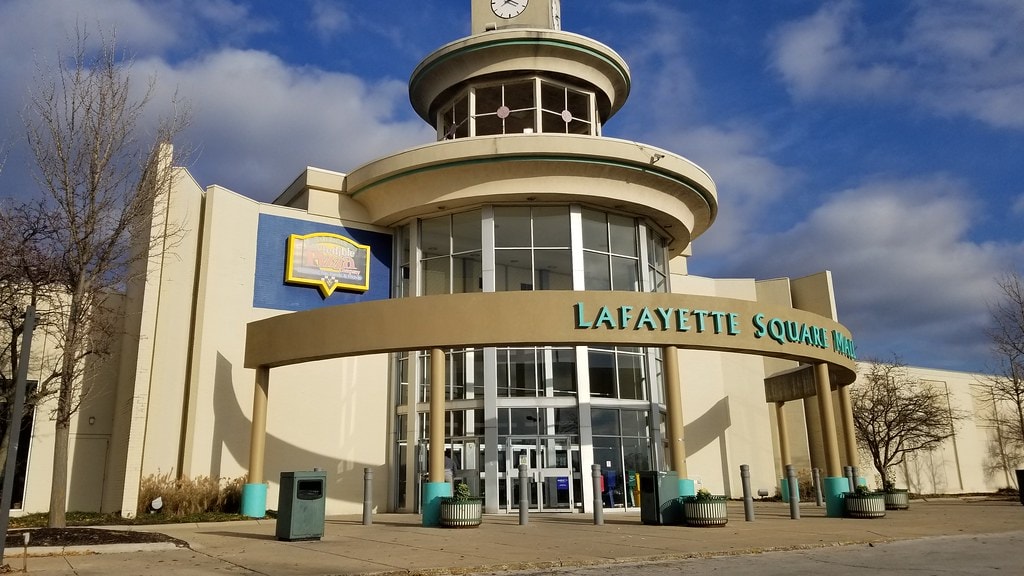
Leasing Trouble and Retail Flight
From 2005 forward, the mall started thinning out in ways that were hard to ignore.
National chains that had once signed long-term leases began letting them expire quietly.
JCPenney and Old Navy both left in 2005, which rattled what was left of the national tenant lineup.
By 2006, you could walk the concourse and notice more vacant storefronts tucked between low-rent merchants.
National chains were down to a handful. Bath & Body Works, Victoria's Secret, and Andrews Jewelers all closed their locations in late 2010.
Claire's and The Children's Place followed suit in early 2012.
What replaced them often lacked the polish or permanence of what came before.
By the time Burlington Coat Factory shut down in August 2019, only six national retailers were still holding on, mostly athletic brands like Champs Sports and Jimmy Jazz.
Shoppers World eventually slid into the former Burlington space in 2021, trying to consolidate what was left.
But the mall had already shifted from destination retail to a patchwork of local leases and stopgap arrangements.
Real Estate Transfer and the "Window" Pitch
In 2021, Sojos Capital acquired the full mall property.
The company, based in Indianapolis and tied to Perez Realty Group, paid around $20 million for the entire parcel.
By November of that year, they made their intentions public: they planned a multi-million-dollar overhaul under a new banner, "Window to the World."
The pitch bundled together housing, food venues, arts, and commercial facilities under a single umbrella.
Not just the mall but also the surrounding properties.
Plans mentioned a youth education center, a sports facility, office space, and a music venue.
They spoke openly about bringing in public safety upgrades and infrastructure work.
Though renderings circulated, the main building was still open to shoppers at that point.
That changed on August 29, 2022, when the mall officially closed.
The closure wasn't sudden; it had been announced ahead of time, but most of the structure was still intact afterward.
In interviews in late 2022, Sojos confirmed that the design stage was still underway.
Although early estimates floated a $200 million investment, costs and plans started drifting.
Even with public statements and photos, little visible work appeared on the main structure before the end of that year.
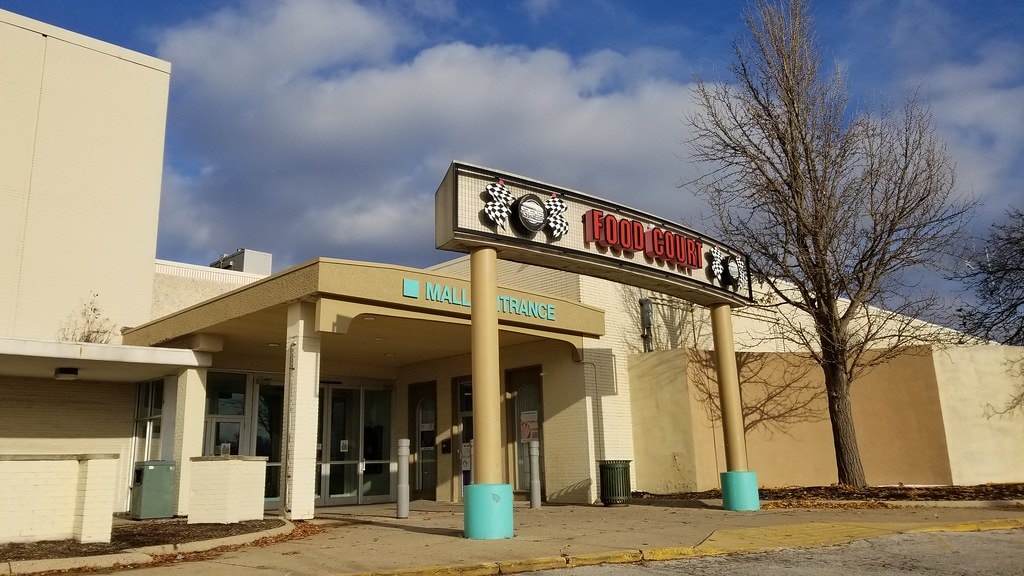
Capital Investment and Site Work Stalls
Following the August 2022 closure, Sojos Capital moved ahead with early infrastructure work across the Lafayette Square Mall property.
By late 2022, the company reported investing about $50 million into basics, roofing, lighting, HVAC replacement, and parking lot repair.
Work focused mostly on behind-the-scenes upgrades, things that didn't register much from the street.
One notable shift came in how Sojos handled displaced tenants: a temporary retail setup was opened inside the former Sears space to house vendors while the main structure awaited demolition.
Surrounding properties also got attention.
The International Marketplace Coalition helped usher in a broader neighborhood effort, branding the district and funding local events.
The International District Community Center opened in 2023 as one of the few completed components tied to the broader development.
Public timelines continued to cite 2023 as a transitional phase, but little commercial activity appeared on the core structure itself.
Construction of the Alamo Drafthouse Cinema next to the mall got underway with a soft target of late 2023 for completion.
Despite the broader promises under the "Window to the World" name, no large-scale demolition of the mall occurred in that period.
Renderings circulated, and some fencing went up, but the mall's outer shell stayed in place through the start of 2024.
Master Plan Reset and Project Rebranding
By early 2024, Sojos scrapped the "Window to the World" concept.
Costs had climbed sharply, and investor confidence leaned toward a more flexible, phased development.
In February 2024, they reported that a new master plan, rebranded simply as "The Square", would replace the original concept.
Estimated costs now range between $700 million and $1 billion.
The revised layout proposed demolishing nearly all of the mall, leaving only a portion reserved for a food hall, art spaces, and a live entertainment zone.
The updated plan called for 370 hotel rooms, more than 1,200 residential units, a 200,000-square-foot sports complex, and a 100,000-square-foot film and television production studio.
Around 533,000 square feet of commercial office space rounded out the numbers.
By February, the project was still in pre-construction.
Sojos stated that demolition and groundbreaking were scheduled to begin by the end of 2024.
A phased opening had been pushed to late 2025.
With the old plan retired and new tenants being courted, Sojos refiled planning documents with the city to adjust for broader zoning categories and commercial tax incentives.
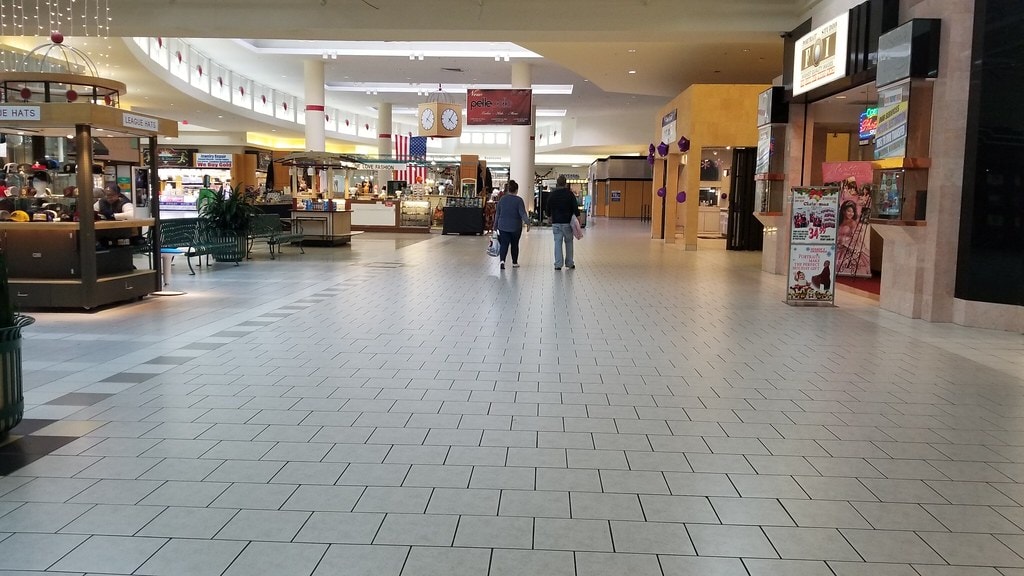
Mixed-Use Development Commitments and Timelines
By September 2024, the redevelopment of Lafayette Square Mall shifted again from paperwork to preparation.
IBJ reported that Sojos Capital planned to break ground on its first residential building in early 2025.
The structure would be part of a broader mixed-use plan filed under "The Square" banner, with retail and community components folded into its footprint.
As of that update, the project remained in its design phase, but developers confirmed that demolition permits were moving forward.
The apartment construction marked the first vertical build of the new phase.
Alongside that, plans included a multipurpose theater, flexible commercial storefronts, and walkable paths meant to replace the closed mall corridors.
Design renderings showed open-air blocks stitched together with plazas and greenspace, modeled on mid-tier urban development more than enclosed retail hubs.
Project officials didn't confirm final leaseholders at that stage but said tenants were being vetted and design layouts were being adjusted accordingly.
That same month, the city confirmed it was reviewing rezoning requests and fielding talks about tax-increment financing options tied to infrastructure improvements.
With apartments prioritized, Sojos aimed to meet a 2026 delivery target for initial occupancy, pushed back slightly from the previous year's estimate.
Affordable Housing, Film Space, and Local Reactions
By the fall of 2024, Sojos Capital had expanded the buildout to include lower-income residential development.
In October, a 144-unit affordable housing complex was planned for the site of the former Sears Automotive Center.
The apartments were part of a broader site segmentation that matched housing with creative-use spaces.
The report also confirmed plans for a 100,000-square-foot film and TV studio folded into the west side of the project footprint, though construction timelines were still vague.
Public response was mixed.
Local Reddit threads in late 2024 and early 2025 tracked delays, site conditions, and drone footage of the mall shell still intact.
Some commenters were optimistic. Others pointed out that months had passed without visible movement.
The timeline held, but enthusiasm cooled as nothing vertical had broken ground yet.
🍀

